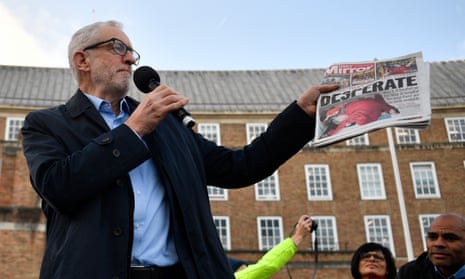There was nothing unusual about the way the story of four-year-old Jack Williment-Barr came to our attention – the boy you may have seen in news stories lying on the floor of a Leeds hospital. His mother, Sarah Williment, found herself in a moment of panic: her baby needed her. Moreover, her baby needed medical care from the amazing doctors and nurses at Leeds General Infirmary (LGI) but such was the demand from patients, he had to be made as comfortable as possible – on a pile of coats on the floor – until a bed and care became available.
With only good intentions, Williment contacted her local newspaper, the Yorkshire Evening Post. In times of trouble, people often turn to their local newspaper. In this instance, Sarah only wanted to others to see just how stretched the team at LGI was, and humanise the impacts of too few hands at the pump.
The reporter who picked up the email from Williment did what people expect us to do, did what our tutors and mentors teach us to do at college when we train and that is, as we say, stand the story up. Or what I call bog-standard journalism. Call the mother, chat to her. Listen to her and then decide what to do next.
After that initial exchange, you take the tale to those at whom the finger is pointed and you ask them a few simple questions. That we did and the tale was duly “stood up” – factchecked – and published online, amplified on social media and prepped for our front-page print edition overnight.
To any journalist working on regional or local papers, that’s run-of-the-mill stuff. Check the facts, check them again, push out to all platforms. Move on to the next job.
Except the story of Jack Williment-Barr took on a wider dimension when a national tabloid followed up our story, splashed it on their cover, and Jeremy Corbyn picked up on Jack’s predicament at a Labour rally as something with which to attack Boris Johnson, his Conservative government and its funding of the NHS.
Following that moment our original story was sucked into a vortex of disinformation that would make Orwell blush. Very quickly, a number of seemingly manufactured social media accounts were peddling lines such as: “I am a former paediatric A&E nurse, and …”, going on to discredit the image. One other standout line peddled by hundreds of fake accounts said: “I have a good friend who works at LGI, and …” going on, again, to discredit our story and our source.
Now, this isn’t necessarily unusual but the intensity of it was. The speed at which this disinformation proliferated was mind-boggling. Even more disconcerting was that it cut through to the consciousness of normal, real, ordinarily sensible people. It then cut through to people with larger media profiles and influence. For example, Allison Pearson, a columnist with the Daily Telegraph, declared: “So I have detailed explanation from paediatric nurses explaining why photo of child on the floor is ‘100% fake’. I will put in @Telegraph on Weds.” Not done with attacking Sarah and Jack, she added: “Stage a photo. Cause outrage. Castigate people who doubt it for showing insufficient compassion. Jesus.”
Those degrees of escalation are important. They’re important because that’s how such messages proliferate: through the sharing – and therefore authentication by proxy – of mistruths by people you trust.
On Monday night, one of our readers, a woman called Margaret, wrote to tell me that despite being a regular buyer of the Yorkshire Post (sister paper of the Yorkshire Evening Post), she had been let down by us. She’d seen a post on Facebook that showed we had not checked our facts. That social media post was from a nice, respectable, family-oriented lady who had a “good friend” working as a nurse at LGI who explained that our news story was in fact fake. This is despite all of the facts in front of Margaret – and all readers – on our part: including an explanation from the chief medical officer at Leeds Teaching Hospitals General Trust and an apology – a sincere and heartfelt one – from its chief executive.
I faced losing a loyal reader because Margaret was taken in by the seeming warmth and sincerity of the manipulatively crafted words of a complete stranger. Someone who she did not know, could not contact, could not hold to account. This digital disease of our time was killing my business, imperilling the livelihoods of those employed on the titles I’m charged with looking after.
I wrote to Margaret to politely and sympathetically explain she had been the victim of a con. The source she cited had been tracked down by lunchtime on Tuesday: the woman whose Facebook post claimed the Jack Williment-Barr story was a hoax said that her account had been hacked and she had nothing to do with the allegations.
Unlike most cons, Margaret had lost no money. But she – like all of us – is in danger of losing something more valuable: the ability to discern between truth and lies in the news we consume, wherever we consume it.
